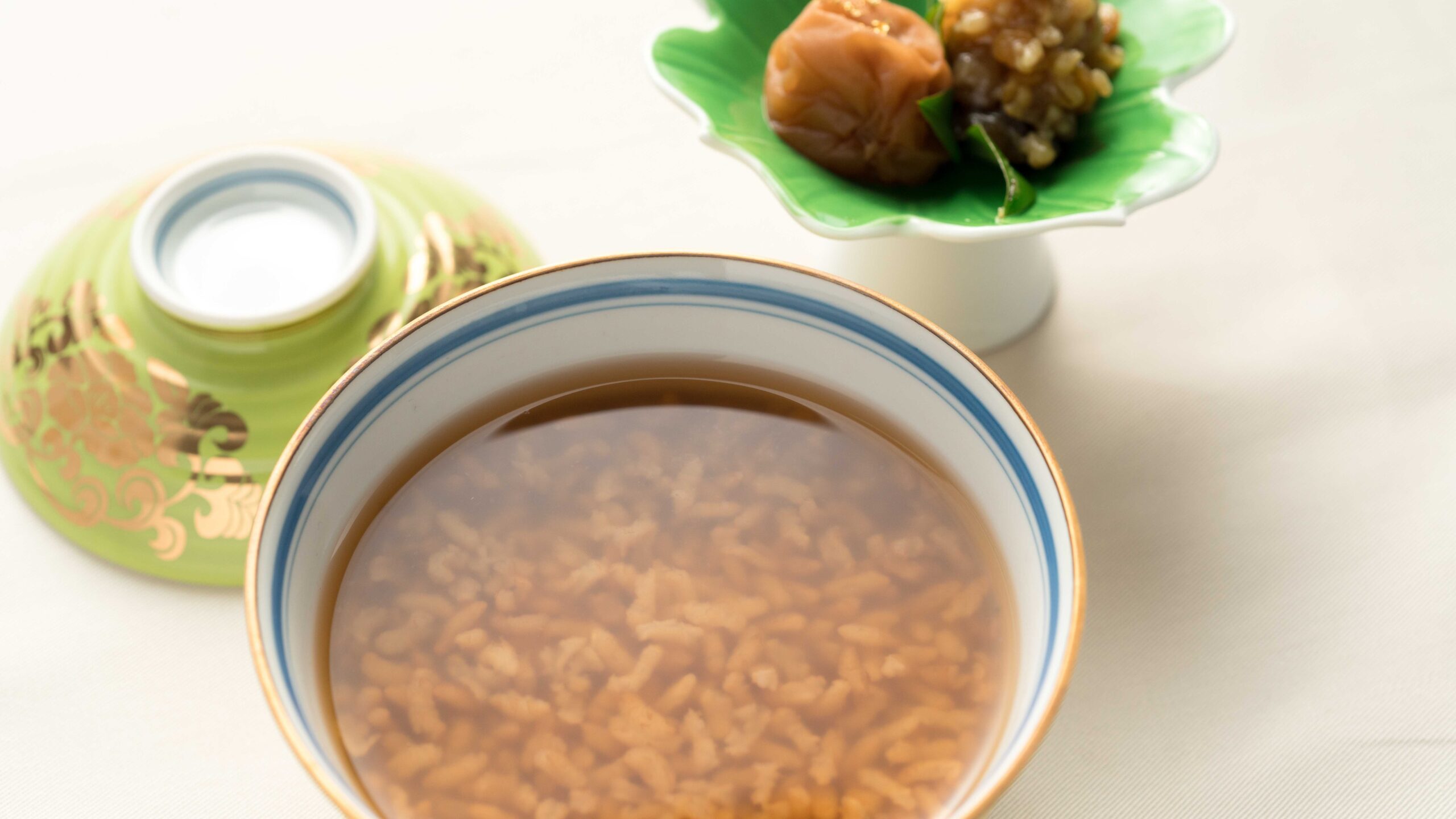
Alright, let’s talk about a real Wakayama classic – “Okayu,” or as the locals affectionately call it, “Okaisan” or “Okayusan”! It’s a simple dish of tea-infused rice porridge that’s been a staple in this mountainous region for centuries. Wakayama is known as “Kino-kuni,” the Land of Trees, and because flat land for growing rice was precious, people came up with clever ways to make a little rice go a long way. This is where Okayu comes in! It’s a humble dish, but it’s packed with history and local flavor. Let’s get into it!
Dish Name: Okayu / Chagayu
- Region / Location: Wakayama Prefecture (throughout the prefecture)
- Primary Area of Tradition: Wakayama Prefecture
- Main Ingredients: Rice, Bancha (coarse tea) or Hojicha (roasted green tea)
How It’s Eaten / Served
Okayu, or Chagayu, is a simple dish of rice cooked in tea rather than water. To make it, you boil water in a pot, add Bancha or Hojicha tea leaves in a tea bag, and let the tea infuse the water with its color and flavor. After removing the tea bag, you add washed rice and cook it over high heat. As the rice cooks and expands, you stir it gently with a wooden spatula. Once the rice is cooked to a porridge consistency, you remove it from the heat. Some people add a pinch of salt to taste. It’s a simple dish, but there are many regional and family variations. Some people call the plain version “Bozu Chagayu” (monk’s tea porridge), meaning it has no extra ingredients.
In the northern and central parts of Wakayama, people sometimes add fava beans or green peas to make “Mame Chagayu” (bean tea porridge). In the southern part of the prefecture, they make “Mukago-gayu” (Mukago tea porridge) with Mukago, the small bulbils that grow on yam vines, in the autumn. Other variations include topping it with pickled plums (Umeboshi), Kinzanji miso, grilled mochi (rice cakes), or adding dumplings made from rice flour, wheat flour, or millet flour.
Cultural Background and Preservation
In the mountainous areas of Wakayama, where there’s limited flat land for rice cultivation, Okayu has been a practical and satisfying way to stretch a small amount of rice. In the southern regions, where rice farming was particularly challenging, it was a staple food, sometimes eaten five or six times a day. Historically, many households even grew their own tea, which further supported the tradition of Chagayu. There’s even a local folk song from the Inami region that speaks of siblings quarreling over Okayu with sweet potatoes, showing how much people enjoyed this simple dish.
Today, tea bags specifically for making Chagayu are sold in supermarkets throughout Wakayama. While older generations still enjoy it as a regular meal, even younger people have found new ways to incorporate it into their diets, such as pouring it over cold white rice or Chirashi sushi. It’s a testament to how deeply ingrained Okayu is in Wakayama’s food culture.
Additional information:
- Okayu (お粥): Japanese rice porridge.
- Chagayu (茶粥): A type of Okayu made with tea instead of water.
- Okaisan/Okayusan (おかいさん/おかゆさん): Affectionate local terms in Wakayama for Chagayu.
- Kino-kuni (木の国): Literally “Land of Trees,” a nickname for Wakayama Prefecture, known for its mountainous terrain.
- Bancha (番茶): A coarse, low-grade Japanese green tea.
- Hojicha (ほうじ茶): Roasted Japanese green tea.
- Kinzanji Miso (金山寺味噌): A type of miso from Wakayama that contains grains and vegetables.
- Mukago (むかご): The small bulbils that grow on yam vines.
- Chirashi sushi (ちらし寿司): A type of sushi where the ingredients are scattered over a bed of rice.
The information about regional cuisine featured on this website (Piggy's Grandma of Japan) is summarized and adapted from the Ministry of Agriculture, Forestry and Fisheries of Japan (MAFF) website, "Our Regional Cuisines"Additional commentary is provided based on the unique experiences and perspectives of the site's editors.
The copyright for the original content regarding regional cuisine belongs to the Ministry of Agriculture, Forestry and Fisheries of Japan.
The summaries and adaptations published on this site are intended for informational purposes only. Piggy's Grandma of Japan does not guarantee the accuracy or completeness of this information. For the most accurate and complete details, please refer to the original pages on the MAFF website.

